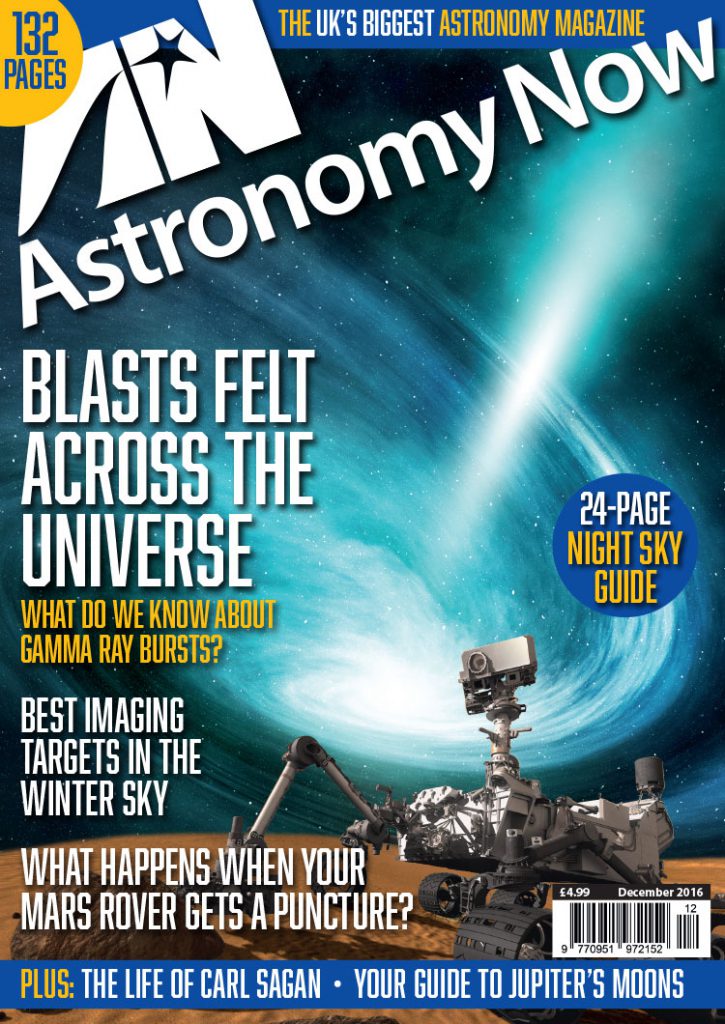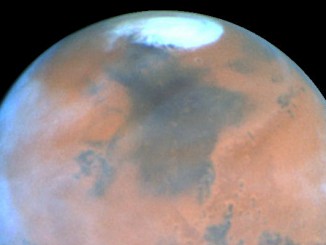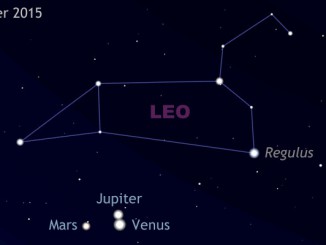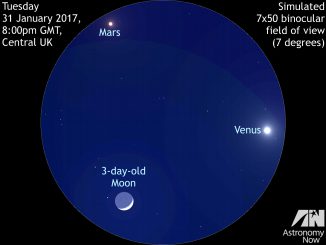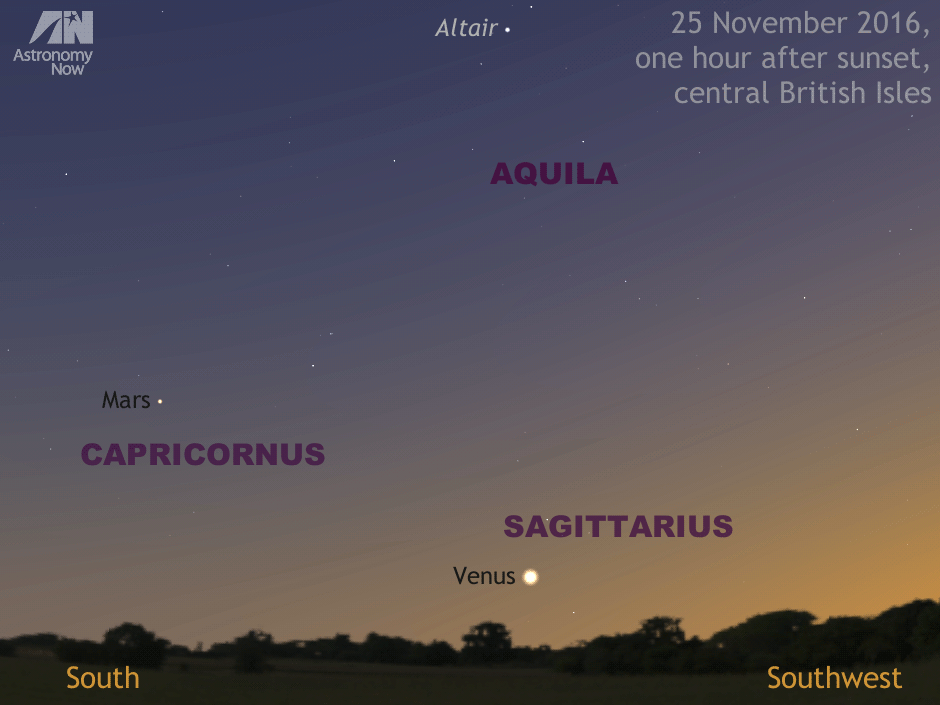
Shining at magnitude +0.6 and 1.4 astronomical units (210 million kilometres, or 131 million miles) from Earth, the Red Planet is a pale imitation of its magnitude -2.1 ochre-coloured splendour at opposition on 22 May this year. In fact, Mars is now twelve times fainter than it was six months ago. Presently some 6.7 arcseconds in size, Mars is little more than a third of its opposition size too. While it may be too small to show much in the way of detail, even for owners of large telescopes, it is interesting to follow the little planet’s progress against the background stars of Capricornus from night to night.
Venus is quite the contrast to Mars. The brightest object in the evening sky until the waxing young crescent Moon returns in early December (the 3-day-old Moon lies above Venus at 5pm GMT on 3 December), its 70 percent illuminated gibbous disc is presently around 16.5 arcseconds in size and its highly reflective cloud deck ensures that it dazzles at magnitude -4.1 — 75 times brighter than Mars. Venus lies in the constellation of Sagittarius for the remainder of the month. Currently 1.03 astronomical units (154 million kilometres, or 96 million miles) from Earth and closing, telescope owners can watch as the angular size of Venus grows over the next few weeks and its phase decreases.
The Southern Hemisphere view
While Venus can only be found low in the south-southwest in twilight as seen from the UK, the planet is currently putting on a glorious show from the Antipodes where it is much higher in the sky at dusk. As seen from Australasia, Venus is still at a respectable altitude once darkness falls, setting more than three hours after the Sun. Mars still holds a respectable position in southern skies too, in excess of 30 degrees high in the west at the end of astronomical twilight as seen from the Australian capital.
Inside the magazine
For a comprehensive guide to observing all that is happening in next month’s sky, tailored to Western Europe, North America and Australasia, obtain a copy of the December 2016 edition of Astronomy Now.
Never miss an issue by subscribing to the UK’s biggest astronomy magazine. Also available for iPad/iPhone and Android devices.

